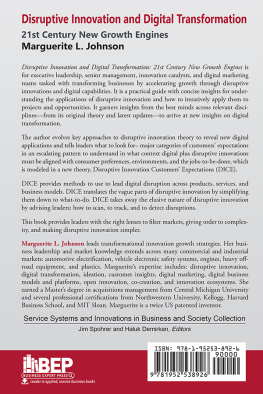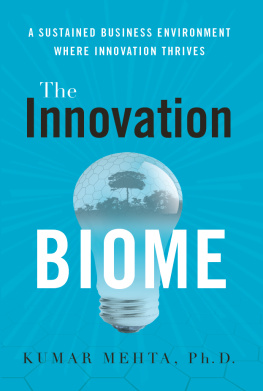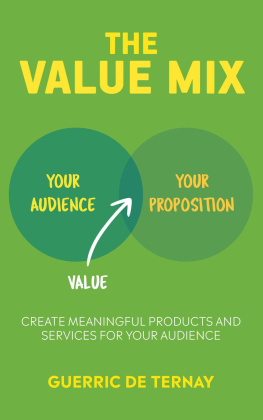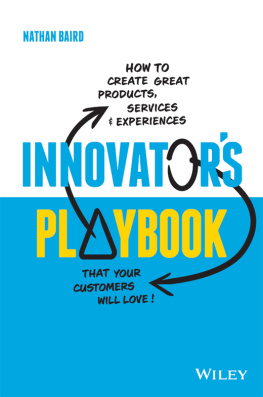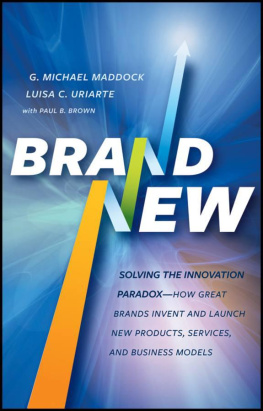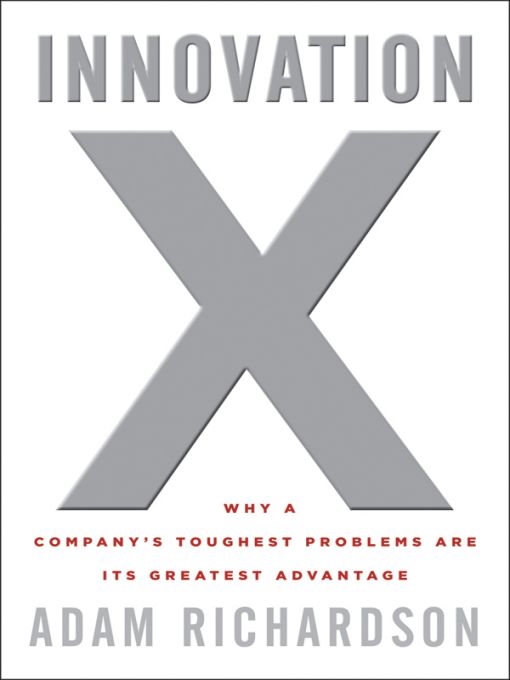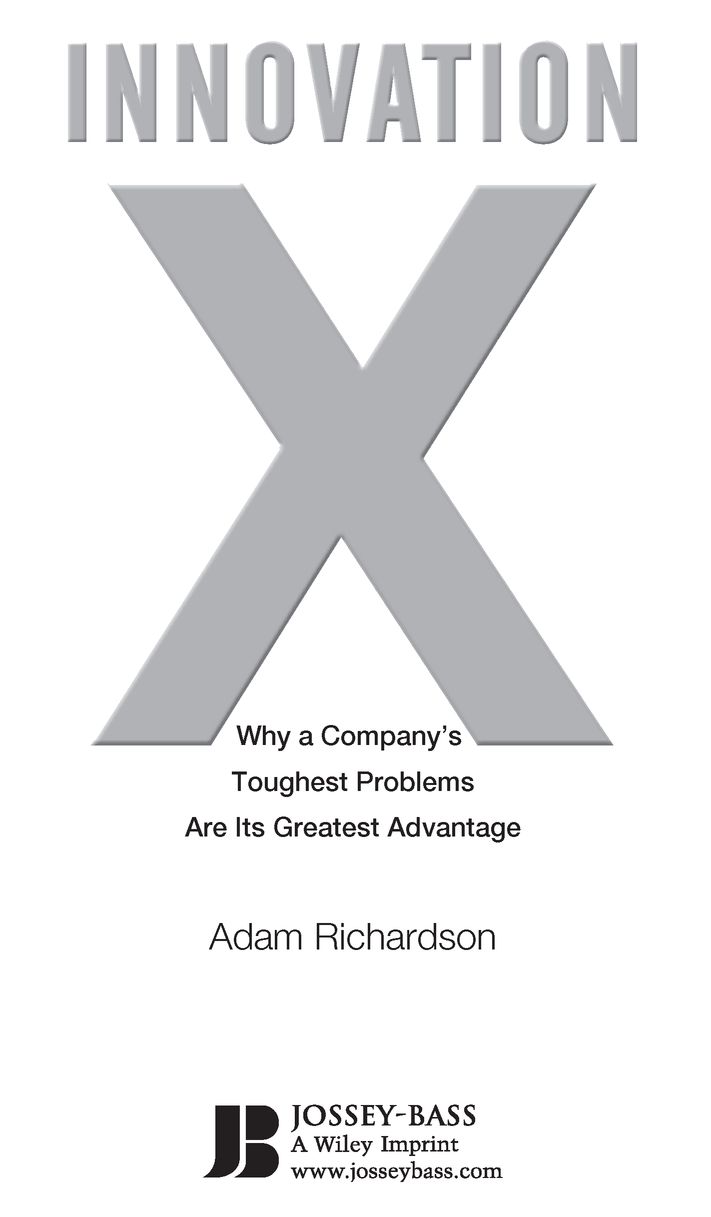Table of Contents
We choose to do these things not because they are easy, but because they are hard.
JOHN F. KENNEDY
Introduction
A mysterious entity called dark matter takes up over half the universe. Though it has been theorized about for decades, until recently no one knew whether it existed at all. Scientists believe it is the glue that holds galaxies together, but we do not know what it is made of, where it comes from, or why it exists. Current astrophysical instruments cannot detect dark matter. The only way to identify its shadowy presence is by observing the influence it exerts on visible matter, such as how it alters the orbits of planets.
In the business world, something equally enigmatic is interfering with our ability to be consistently successful at innovation. Though hard to define, its effects are clear enough: newly released products that fail to achieve the desired goals of growth, competitive advantage, new customers, or revitalized brands, and organizations that struggle to find a focus and identity amid turbulence and ambiguity.
It is a truism now that too many innovations get stalled, squashed, sidetracked, or warped beyond recognition by byzantine organizational processes and decision-making edifices. Some companies have attempted to deal with these internal roadblocks by sequestering specialized innovation teams away in exotically decorated cubicle-free offices, or by ramping up innovation efforts with hothouses (or sandboxes, or kitchenschoose your metaphor). Many employees have been sent to seminars on thinking outside the box with the hope that they will virally infect the rest of the organization.
And yet, one recent study revealed that executives still give odds of worse than a coin-toss as to whether innovations developed with formal processes will have the desired market impact.
Attempts so far to systematize innovation have failed, and innovation processes are often haphazard in structure and frustratingly unpredictable in their success rates. The word itself is so widely overused that it has lost its meaning. Innovation has become an end in itself, rather than the means to create a successful business, improve the lives of our customers, and make the world a better place.
Clearly, innovation is broken. But innovation is not the problem.
The problem is the problem.
By this I mean that the scope and complexity of problems that businesses must solve have changed, and we lack the tools not only to diagnose them but also to focus our innovation efforts to be more consistently successful. I call this new breed of innovation challenges
X-problems, and they arise from the collision of several factors:
Disruptive competition and blurring of industry boundaries as companies leap into each others spaces, diversifying beyond their core categories into realms previously reserved for partners or adjacent companies.
More demanding customers who place a higher premium on the experiential qualities of using a productease of use, how it makes them feel, how it fits into their lives, what it communicates to othersthat go above and beyond familiar objective criteria like performance and price.
The need to create integrated systems of physical products, software, online experiences, and services that work as a single whole. Often these integrated systems are the keys to expansion beyond core areas, as well as to meeting customer needs in ways impossible from a more isolated offering.
What I have found from working across multiple industries and geographies is that, remarkably, almost all of them are dealing with this same combination of simultaneous challenges. It seems that everyone was caught off guard. These multifaceted problems are the dark matter of the business worldpervasive, yet hard to see except by their effects: organizational confusion and frustration, and innovation efforts that fail to meet expectations (if they make it to market at all).
While considerable attention has been given to the internal reasons why organizations fail at innovation, I believe that external factorsthe dramatically increased complexity of the problems themselvesare at least as much to blame. If an organization has an optimized innovation process but a poor understanding of the problem, all it is doing is getting the wrong answer to market faster. Up to a point this is actually okayit turns out that you have to put wrong stuff out into the world to understand what right isbut obviously no one wants to be doing this on a prolonged basis.
This calls for tools that clarify the problem and help focus innovation efforts more productively. This book aims to provide you with those tools.
The seeds of this book were laid by my work at the global innovation firm frog design, inc. Starting with its founding in 1969, frog design has had a client list that reads like a whos-who of leading-edge companies: Apple, BBC, Disney, GE, HP, Lifescan, Microsoft, Siemens, Sky, Sony, Virgin Mobile, and Yahoo, to name a few. Over the decades, frog has expanded from a traditional design agency doing industrial design and mechanical engineering to a consultancy that does much of its work in the software realmWeb sites, software applications, mobile device interfacesin addition to physical product design, plus systemic integration of all these elements into single offerings. Chances are very good that you have a frog-designed product in your home or workplace.
The book describes a variety of detailed case studies based on frogs work, in addition to non-frog examples that touch on a range of industry areas. Alongside these from the trenches case studies I discuss tools and methods that were developed out of them. Because every company and industry is different, these tools and methods will be more applicable and customizable than is often easily done with highly specific case studies. The book does cover a lot of territory, which is a necessity due to the complex nature of X-problems that involve multiple interrelated challenges. It is impossible for a single book to cover all the issues exhaustively, but a key message of the book is that awareness of the interconnectedness of the issues is at least as important as focusing on any of them individually.
Cross-fertilization of knowledge across disciplines and industries is a core value at frog. What lessons can be taken from work in the wireless communications industry, for example, into the automotive realm? Or for that matter, what about the reverse? To that end, frog is unusual among major consultancies in that it is not divided up by industry verticalsconsumer electronics, packaged goods, telecommunications, and the like. This has given me a chance to work across many industries, shifting from looking at the future of toothpaste one day to rethinking mission control for NASA on another.
frog is also unusual for design-centric firms in the breadth of its global footprint, the diversity of nationalities of its staff, and the attention it pays to sharing cultural insights across offices and continents. The company was started in Germanys Black Forest by Hartmut Esslinger, an icon in the industrial design world. Since then it has branched out to eight offices worldwide, which has given me the opportunity to see the perspectives and challenges of companies from many regions.


